Angeliki Alexiou
Bending beams for 6G near-field communications
Oct 10, 2024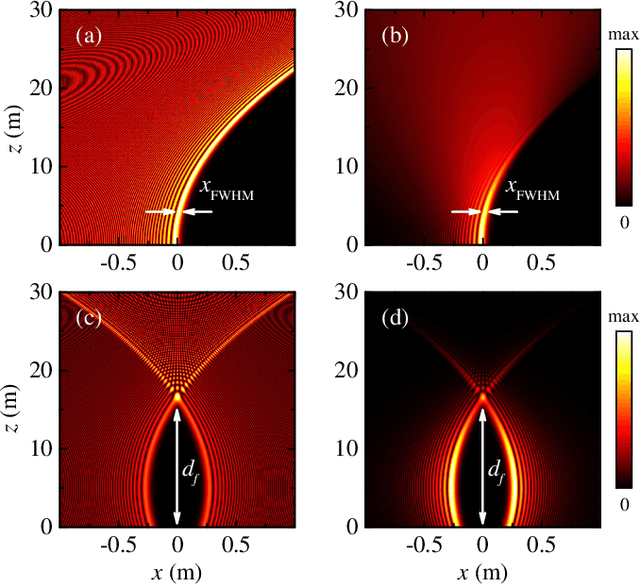
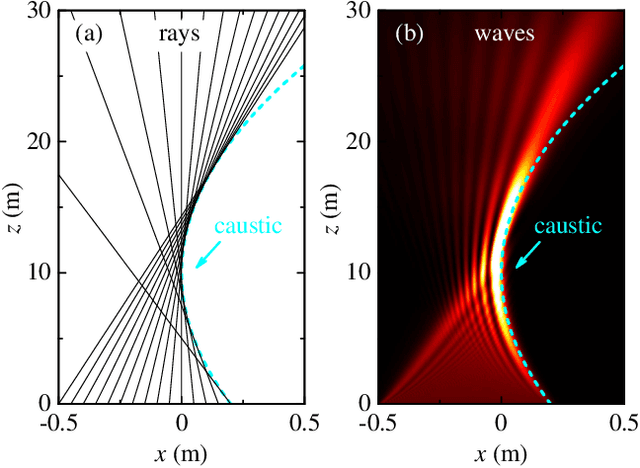
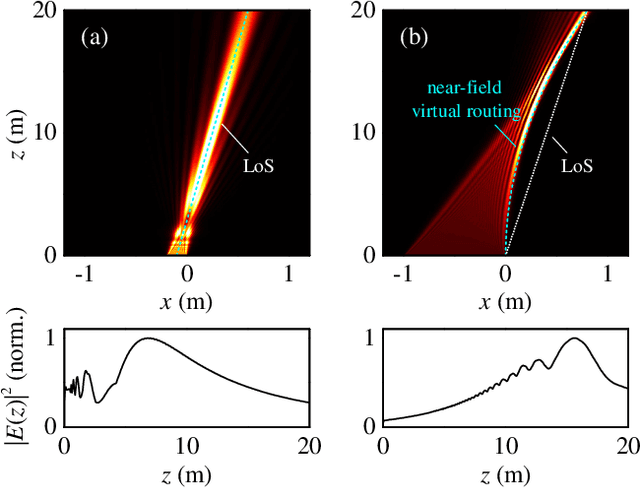
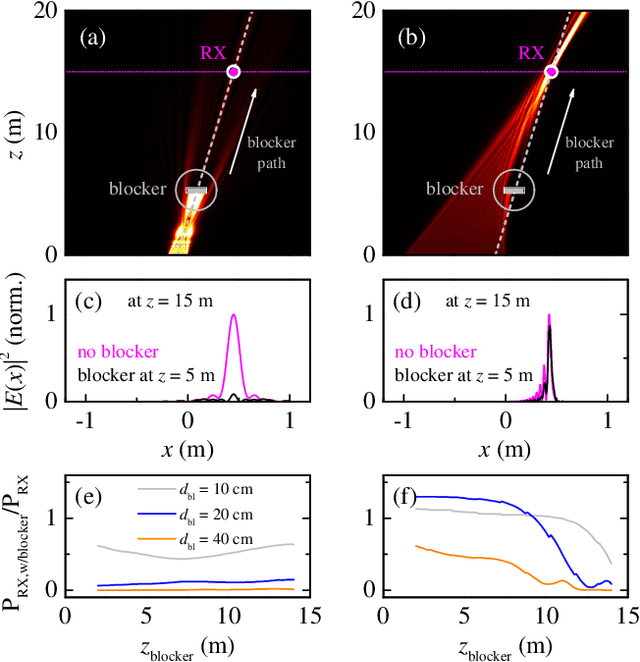
Abstract:Future wireless connectivity is envisioned to accommodate functionalities far beyond broadband data transmission over point-to-point direct links, enabling novel scenarios, such as communication behind blockers and around corners, and innovative concepts, such as situational awareness, localization and joint communications and sensing. In this landscape, beams that are able to propagate on bent paths are ideal candidates for dynamic blockage avoidance, interference management in selected regions, and user connectivity on curved trajectories. In this work, we study beam shaping for applications in near-field wireless connectivity. We explain the underlying mechanism of beam bending and we present the design principles for tailoring the curvature of the propagation trajectory. We discuss design aspects for generation of such beams with large arrays and analyze the impact of several parameters on their performance, including the beam's footprint shape, the aperture size, the inter-element spacing, the sub-array selection of active elements, the available phase levels of the array elements and the operating frequency. We introduce the concept of near-field virtual routing (NFVR) and we demonstrate that such beams are able to address challenges of high frequency communications, such as dynamic routing, blockage avoidance and energy-efficiency, more efficiently than conventional beamforming.
Hierarchical Localization for Integrated Sensing and Communication
Oct 01, 2024Abstract:Localization is expected to play a significant role in future wireless networks as positioning and situational awareness, navigation and tracking, are integral parts of 6G usage scenarios. Nevertheless, in many cases localization requires extra equipment, which interferes with communications systems, while also requiring additional resources. On the other hand, high frequency and highly directional communications offer a new framework of improved resolution capabilities in the angular and range domains. The implementation of integrated sensing and communications is being explored to unify the sensing and communications systems and promote a communicate-to-sense approach. To this end, a localization algorithm is presented that utilizes beam-forming and the emerging beam-focusing technique, to estimate the location of the receiver. The algorithm can be implemented with large antenna arrays, and large intelligent surfaces. The performance of the algorithm for static and mobile users is evaluated through Monte-Carlo simulations. The results are presented with the empirical CDF for both static and mobile users, and the probability of successful estimation for static users.
Reconfigurable Intelligent Surfaces as Spatial Filters
Aug 27, 2024Abstract:The design of Reconfigurable Intelligent Surfaces (RISs) is typically based on treating the RIS as an infinitely large surface that steers incident plane waves toward the desired direction. In practical implementations, however, the RIS has finite size and the incident wave is a beam of finite $k$-content, rather than a plane wave of $\delta$-like $k$-content. To understand the implications of the finite extent of both the RIS and the incident beam, here we treat the RIS as a spatial filter, the transfer function of which is determined by both the prescribed RIS operation and the shape of the RIS boundary. Following this approach, we study how the RIS transforms the incident $k$-content and we demonstrate how, by engineering the RIS shape, size, and response, it is possible to shape beams with nontrivial $k$-content to suppress unwanted interference, while concentrating the reflected power to desired directions. We also demonstrate how our framework, when applied in the context of near-field communications, provides the necessary insights into how the wavefront of the beam is tailored to enable focusing, propagation with invariant profile, and bending, beyond conventional beamforming.
Near-field orthogonality and cosine beams for near-field space division multiple access in 6G communications and beyond
Aug 23, 2024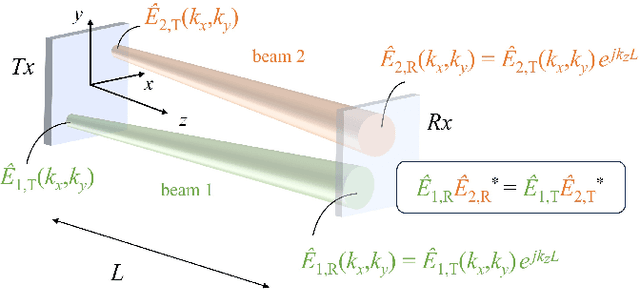
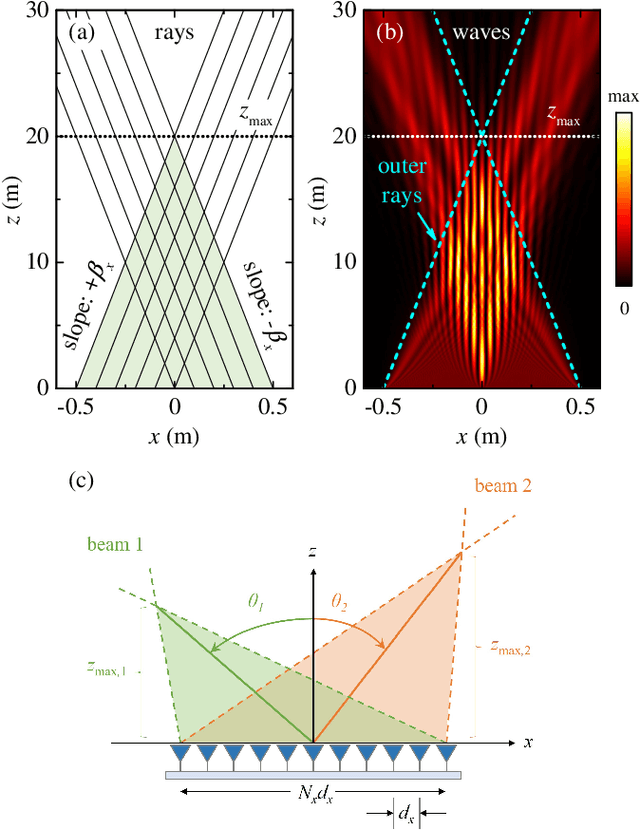
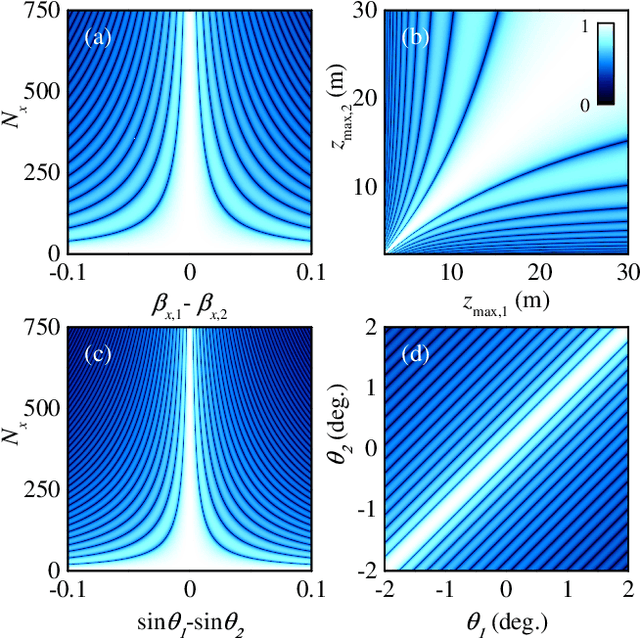
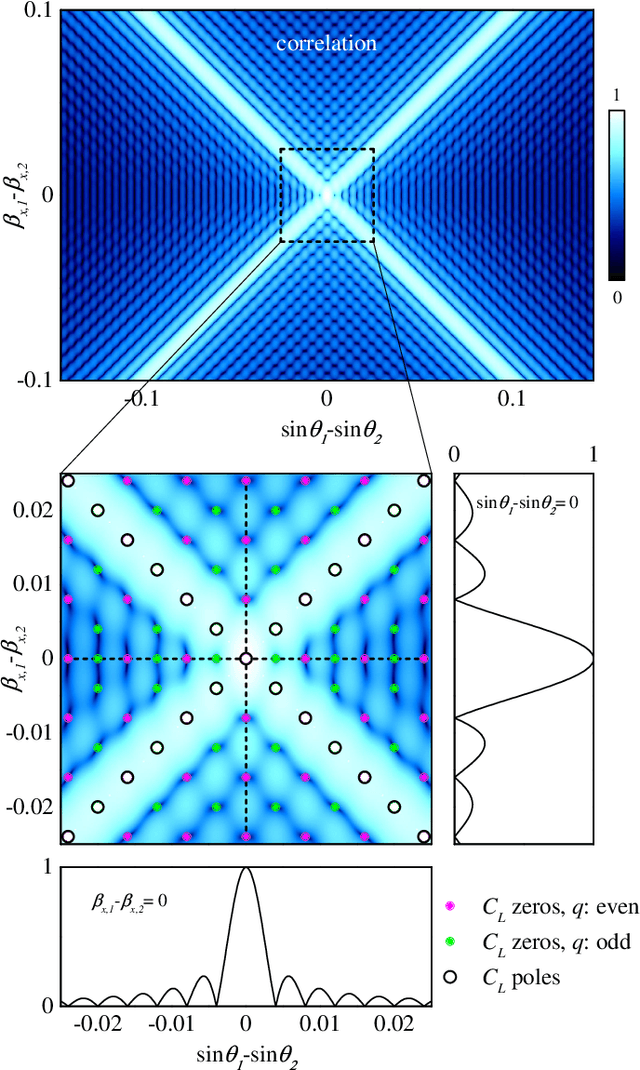
Abstract:Spatial division multiple access (SDMA), a powerful method routinely applied in multi-user multiple-input multiple-output (MIMO) communications, relies on the angular orthogonality of beams in the far field, to distinguish multiple users at different angles. Yet, with the gradual shift of wireless connectivity to the near-field of large radiating apertures, the applicability of classical SDMA becomes questionable. Therefore, to enable near-field multiple access, it is necessary to design beams that have the desired orthogonality in the near-field. In this work, we propose the concept of near-field space division multiple access (NF-SDMA), to enable SDMA in the near-field. We demonstrate analytically that the orthogonality of beams is preserved at any location of the receiver, from the near-field to the far-field of the transmitter. By judicious design, we select the family of cosine beams and we prove that they satisfy the orthogonality condition, offering a multitude of communication modes in the near-field. We demonstrate how the correlation of beams generated with uniform linear arrays (ULAs) is extended to uniform planar arrays (UPAs) in a straightforward and insightful manner. To test our analytical findings, we propagate the designed beams numerically, and we measure their orthogonality both at the transmitter and the receiver. We verify that the orthogonality of the proposed beams is successfully retrieved at a receiver that resides in the near-field of the transmitter, and is also robust to displacements of the receiver. Based on our findings, we propose codebook designs for NF-SDMA that are applicable for receivers with many elements and even with single antennas.
Perceptive, Resilient, and Efficient Networks assisted by Reconfigurable Intelligent Surfaces
Dec 02, 2023Abstract:Wireless communications are nowadays shifting to higher operation frequencies with the aim to meet the ever-increasing demand for bandwidth. While reconfigurable intelligent surfaces (RISs) are usually envisioned to restore the line-of-sight of blocked links and to efficiently counteract the increased pathloss, their functionalities can extend far beyond these basic operations. Owing to their large surface and the multitude of scatterers, RISs can be exploited to perform advanced wavefront engineering, essentially transforming the incident beam into a non-trivial reflected beam that is able to address the challenges of high frequencies more efficiently than conventional beam-forming. In this paper it is demonstrated how advanced wavefront engineering with RISs enables beam profiles that are able to focus, bend and self-heal, thus offering functionalities beyond the current state-of-the-art. Their potential as enablers of perceptive, resilient, and efficient networks is discussed, and a localization technique based on a hybrid beam-forming/beam-focusing scheme is demonstrated.
On the physical layer security capabilities of reconfigurable intelligent surface empowered wireless systems
Aug 19, 2023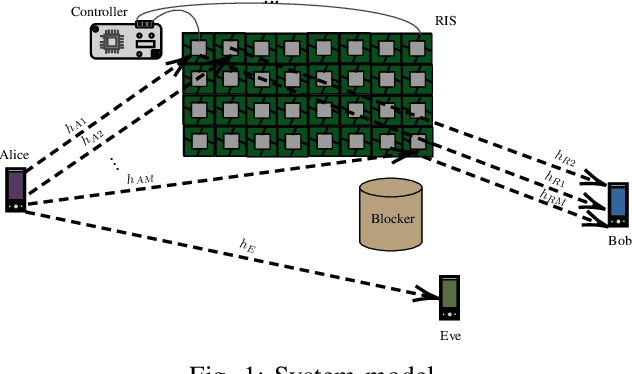
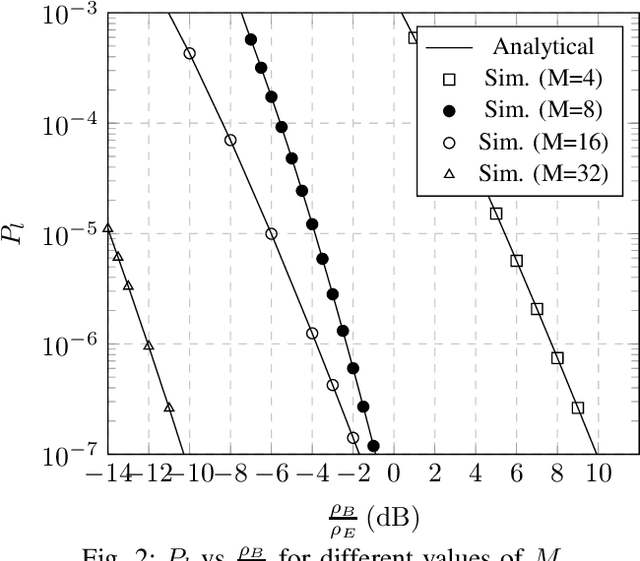
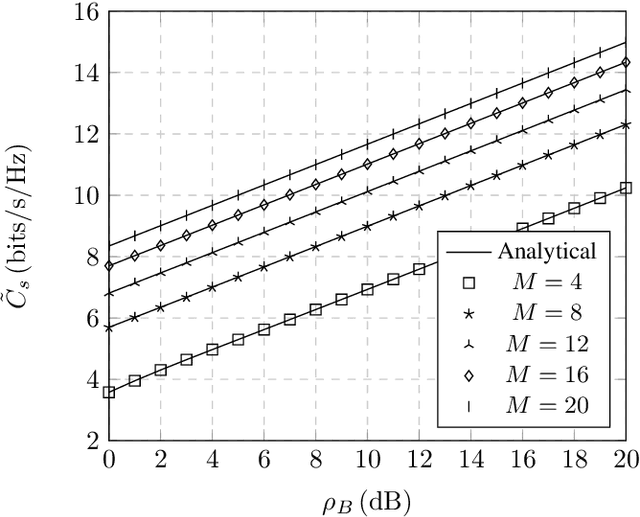
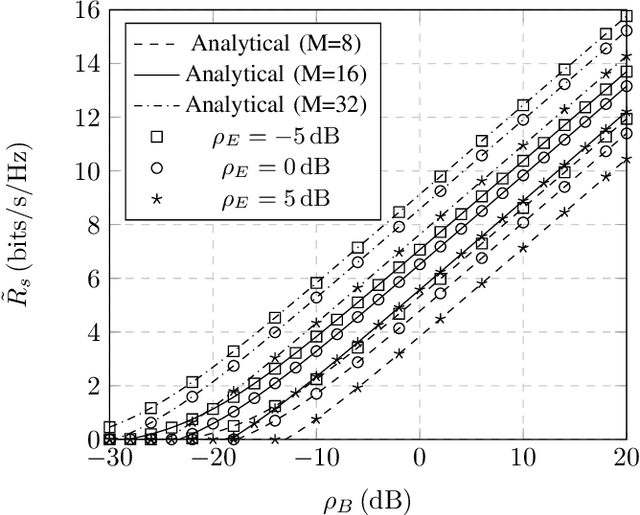
Abstract:In this paper, we investigate the physical layer security capabilities of reconfigurable intelligent surface (RIS) empowered wireless systems. In more detail, we consider a general system model, in which the links between the transmitter (TX) and the RIS as well as the links between the RIS and the legitimate receiver are modeled as mixture Gamma (MG) random variables (RVs). Moreover, the link between the TX and eavesdropper is also modeled as a MG RV. Building upon this system model, we derive the probability of zero-secrecy capacity as well as the probability of information leakage. Finally, we extract the average secrecy rate for both cases of TX having full and partial channel state information knowledge.
Training Terahertz Wireless Systems to Battle I/Q Imbalance
Jun 02, 2023



Abstract:Due to the non-ideality of analog components, transceivers experience high levels of hardware imperfections, like in-phase and quadrature imbalance (IQI), which manifests itself as the mismatches of amplitude and phase between the I and Q branches. Unless proper mitigated, IQI has an important and negative impact on the reliability and efficiency of high-frequency and high-data-rate systems, such as terahertz wireless networks. Recognizing this, the current paper presents an intelligent transmitter (TX) and an intelligent receiver (RX) architecture that by employing machine learning (ML) methodologies is capable to fully-mitigate the impact of IQI without performing IQI coefficients estimation. They key idea lies on co-training the TX mapper's and RX demapper in order to respectively design a constellation and detection scheme that takes accounts for IQI. Two training approaches are implemented, namely: i) conventional that requires a considerable amount of data for training, and ii) a reinforcement learning based one, which demands a shorter dataset in comparison to the former. The feasibility and efficiency of the proposed architecture and training approaches are validated through respective Monte Carlo simulations.
* 6 pages, 4 figures
On the Ergodic Secrecy Capacity of Reconfigurable Intelligent Surface Aided Wireless Systems Under Mixture Gamma Fading
Jan 19, 2023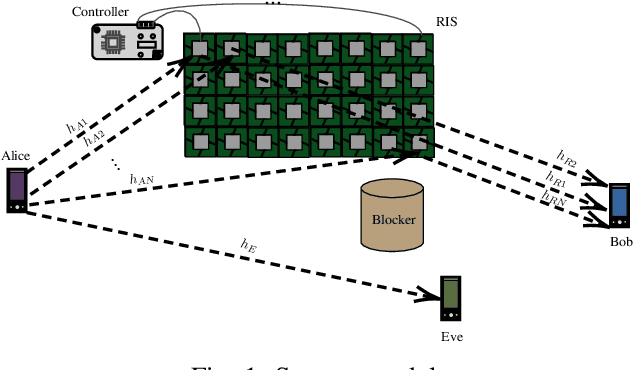
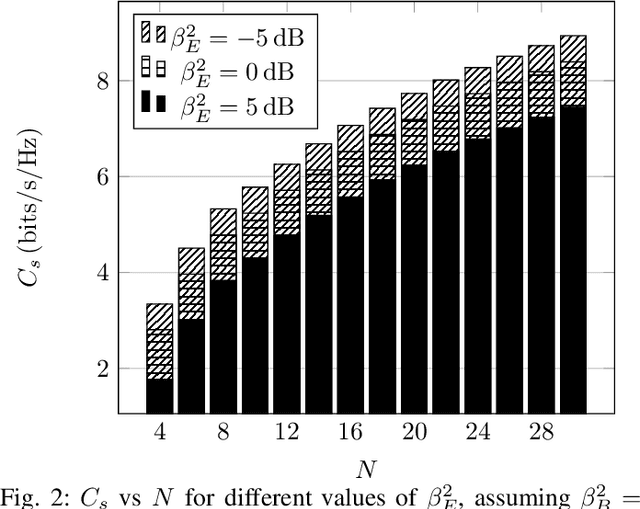
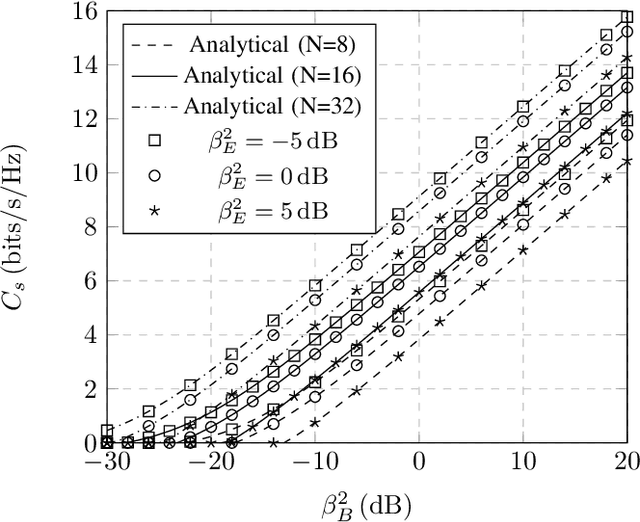
Abstract:This paper presents a quantified assessment of the physical layer security capabilities of reconfigurable intelligent surface (RIS)-aided wireless systems under eavesdropping. Specifically, we derive a closed-form expression for the ergodic secrecy capacity (ESC) that is adaptable to different types of fading and RIS size. The channels between the transmitter (TX) and RIS, the RIS and legitimate receiver as well as the TX and eavesdropper are assumed to follow independent mixture Gamma (MG) distributions. Note that MG is capable of modeling a large variety of well-known distributions, including Gaussian, Rayleigh, Nakagami-m, Rice, and others. The results reveal that as the RIS size increases, although the legitimate links diversity order increases, the ESC gain decreases.
Analytical characterization of RIS-aided terahertz links in the presence of beam misalignment
Dec 12, 2022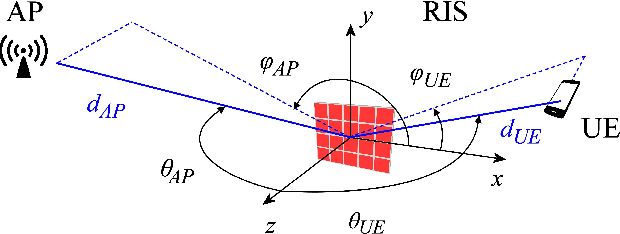
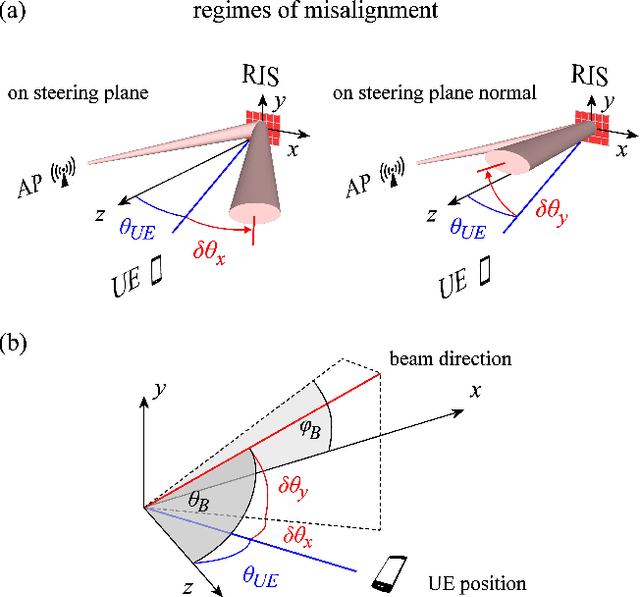
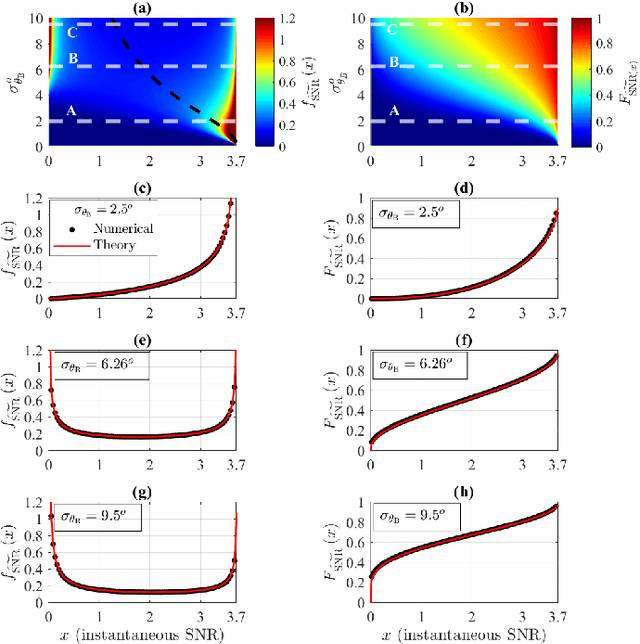
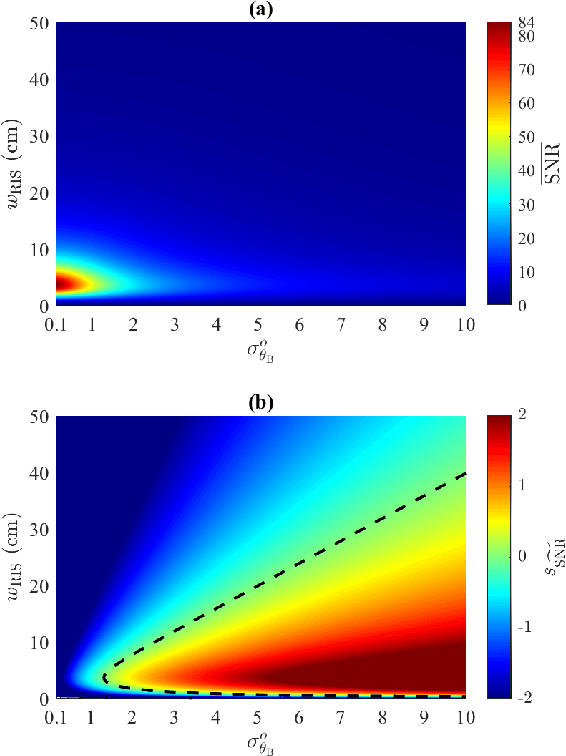
Abstract:The terahertz (THz) frequency band has recently attracted considerable attention in wireless communications as potential candidate for providing the necessary high bandwidth for demanding applications. With increasing frequency, however, the communication link becomes more vulnerable to blockage and pathloss increases. While both effects can be mitigated with the judicious utilization of directional beams and Reconfigurable Intelligent Surfaces (RISs), high directivity could potentially increase the probability of undesired misalignment between the beam that is steered by the RIS, and the user. It is therefore crucial to characterize and understand the stochastic behavior of misalignment in RIS-aided THz links. In this work, beam misalignment in RIS-aided links is studied theoretically and analytical models are derived, the validity of which is verified through numerical calculations. It is demonstrated that there is a distinction in the stochastic behavior of misalignment between pointing errors that occur on the steering plane or normally to the steering plane, with direct consequences on the link robustness on misalignment. The analytical models capture the impact of misalignment under these qualitatively different conditions and provide the necessary tools for assessing the stochastic RIS performance with respect to crucial link parameters, such as the transmitter's beam width, the transmitter-RIS distance, the RIS-receiver distance, and the steering angle of the RIS.
Throughput analysis of RIS-assisted UAV wireless systems under disorientation and misalignment
Dec 10, 2022Abstract:Reconfigurable intelligent surface (RIS)-assisted unmanned areal vehicles (UAV) communications have been identified as a key enabler of a number of next-generation applications. However, to the best of our knowledge, there is no generalized framework for the quantification of the throughput performance of RIS-assisted UAV systems. Motivated by this, in this paper, we present a comprehensive system model that accounts for the impact of multipath fading, which is modeled by means of mixture gamma, transceiver hardware imperfections, and stochastic beam disorientation and misalignment in order to examine the throughput performance of a RIS-assisted UAV wireless system. In this direction, we present a novel closed-form expression for the system's throughput for two scenarios: i) in the presence and ii) in the absence of disorientation and misalignment. Interestingly, our results reveal the importance of accurate modeling of the aforementioned phenomena as well as the existence of an optimal transmission spectral efficiency.
 Add to Chrome
Add to Chrome Add to Firefox
Add to Firefox Add to Edge
Add to Edge